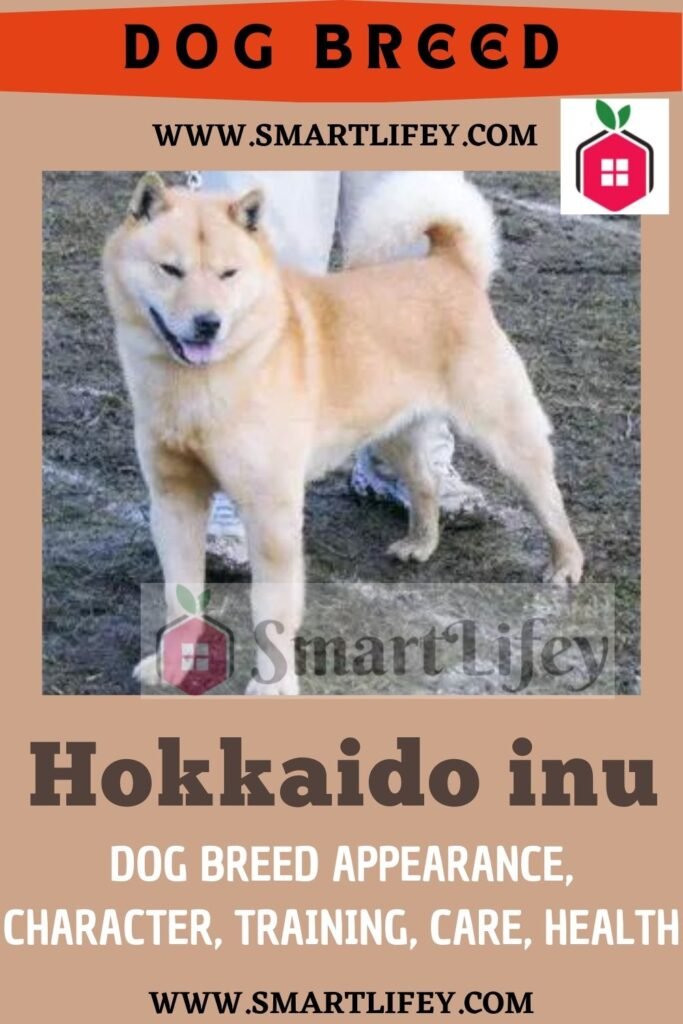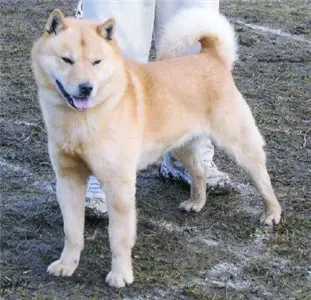
The Hokkaido Inu dog, also called Hokkaido ken and Ainu ken, is a very affectionate dog with its entire human family, however it tends to become attached and dependent on a single member of it.
We are going to know more characteristics of this spectacular canine, we will also see its origin, care, character and much more.
Origin of the Hokkaido Inu dog
This is a beautiful dog from the country of the Rising Sun, its exact place of origin is from the prefecture that gives it its name, Hokkaido.
These dogs are also known by the names of: Hokkaido ken and Ainu ken. Within the origin to which it belongs, these dogs are identified as Do ken.
According to beliefs, these dogs have an initial origin in China and were arriving in Japan thanks to the immigrants who moved there with their dogs.
According to the information collected from the breed, these have more than 3,000 years of history, which is why they are considered one of the oldest breeds.
These adorable canines are believed to be descendants of the Matagi ken, a breed of dog that was introduced from Tohoku to Hokkaido by the Ainu.
These dogs were officially declared a natural monument in 1937, the same moment that the breed adopted the name by which we know it today.
It was a breed that in its beginnings was bred to hunt bears, because they were cold-resistant dogs, thanks to their fur. In addition to possessing great strength and vitality.
At present, they are increasingly required as companion animals, as they have learned to adapt to various types of situations and different environments in which they have been placed.
Characteristics of the Hokkaido ken
The Hokkaido ken is a medium or large-sized dog, with a fairly strong body, muscular and with adequate proportions. They have a robust skeleton and musculature, which makes them appear imposing and very elegant.
The head of these dogs is large, solid and its shape is similar to a wedge. The ears are small and triangular, a fairly common characteristic of Japanese dogs , such as the Akita Inu , the Shikoku Inu, among others.
The eyes of this breed are almond-shaped and are usually always dark in color. The white specimens have been observed with lighter colored eyes .
The coat of these Japanese canines is double-layered, as is the case with most breeds in this country, the inner coat is soft and thin, while the outer coat is thicker and firmer in texture.
The coat color can be quite diverse, from tan with black tips, to red, brindle, white, tan, and black.
The tail of these dogs can be seen curled on their backs, and in general, the fur in this area is a little longer than in the rest of the body.
Care
Like all dogs and different animals, the Hokkaido Inu also require care so that they can live a healthy, full and vital life.
Feeding
It is essential that fresh and clean water be provided to them every day, it must be at their complete disposal at any time of the day. As we are talking about carnivorous animals, the food that is provided must be of quality, not contain cereals or any other by-product.
Although feeding these dogs with this type of diet is a bit more expensive than doing it with cheaper feed , the expense will be worth it since the results are much more noticeable and positive for their health.
Some of these benefits are:
- Brighter and healthier coat.
- Good mood and energy.
- Much healthier and whiter teeth.
Hygiene
These dogs should be bathed monthly and using special canine shampoos. If the dog gets dirty before the month, you can clean it using a cloth dampened in water or using a dry shampoo.
It is important that from time to time the ears and eyes are cleaned, using a clean gauze moistened with water. Remember that cleaning should be done gently and you should use a gauze for each eye and one for each ear.
Exercise and education
Something that will be very necessary for you to take care of as a caregiver is the daily walks, these should be done at least once a day. Also, you should provide him with games to help him exercise.
The education of the Hokkaido Inu is of the utmost importance, it should start from the same day you get home , because your character is strong. So from the beginning he should be taught who the leader is and that he should follow the directions.
Remember that a good education will avoid behaviours or attitudes that can get the dog in trouble. Also, if we include socialization, it will help him bond with other dogs and humans, which will bring many benefits.
Character of the Ainu ken
The Hokkaido Inu dog still has the temperament of its ancestors or precursors. Even today, in some places in Japan, these dogs are still used for hunting.
The Hokkaido Inu personality is tenacious, active, agile, courageous and very protective, so they will do everything possible to protect their family. Thanks to their bravery, they are able to face animals bigger than themselves to protect their own.
They are incredibly active dogs, therefore, their exercise should be done on a daily basis. In this way, the dog is prevented from showing aggression or anxiety by not draining his energy.They are perfect watchdogs. This protective instinct leads him to be suspicious of strangers, be they animals or humans, hence the importance of the Hokkaido Inu puppy socializing.
Training them is easy, if done the right way. Inside the house, with his owners, he is a calm, docile dog with great intelligence , which makes training and mental agility tests very fun.
They are perfect to have in large families and even those with small children, as they are very patient and playful.
Diseases and Health
It is very common for dogs that are this size to suffer from hip dysplasia, as well as dislocation of the patella. This happens when the exercise is too intense, something that happens a lot with this breed.
As for the pathologies in the abdominal region, we have those that affect the digestive system, the most common of these is stomach torsion. This occurs on a regular basis, due to their activities and postures when eating.
Among the congenital diseases of Hokkaido Inu dogs, they are related to visual problems, one of these is progressive retinal atrophy, which can be a problem for their vision.
We must always remember that for our dog to have proper health, we must take it to regular visits with the vet, at least 2 per year.
Additionally, keeping a vaccination and deworming schedule up to date will help our dog to be healthy and free of parasites.
10 curiosities of the Hokkaido Inu

- They are considered as primitive dogs, as the International Canine Federation has cataloged them in this way, since this breed is at least 3,000 years old.
- They are independent dogs, you can leave them alone (although not for too long). What you should do is leave things to do while you are away, whether it be leaving toys, hidden food to look for or any other entertainment.
- They are dogs that tend to get bored very quickly, which can happen when they don’t get enough exercise or distracting activities. If they reach this state, they can cause damage to the house or present inappropriate behaviors (such as excessive barking). Therefore, this breed is not suitable for sedentary people, the elderly or the disabled.
- They are expensive dogs, both to acquire a puppy and for its maintenance, as they require quality food and a specific diet.
- They are perfect dogs to live in large families and with small children, because they love to live with as many people as they can since they receive more attention, which fascinates them. With children they are perfect, since they will always take care of them due to their protective instinct, and also, being so active, they will always want to play with them. In addition, they are dogs with immense patience, so they will always tolerate how unruly infants can be.
- They are not dogs that can adapt well to hot climates, as their fur is abundant, perfect for winter. So in summer they can suffer from heat stroke if they are subjected to high temperatures for too long.
- These dogs will not need to bathe constantly, ideally once a month.
- He is an extremely brave dog, so he will not hesitate to do what is necessary to protect his own and to carry out activities that he thinks are fun.
- Due to their genetics, they are prone to eye diseases.
- The varieties of colors in the coat of this breed are many, they can be bicolor (black and white), tan, red, black, white and tan with black streaks. In the case of white dogs, on some occasions, they may have lighter colored noses and eyes (light brown or light brown).
